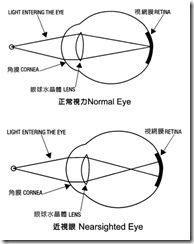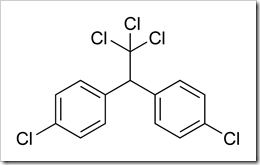So everyone has heard the hype that is going around lately: pinhole glasses. From controversial issues to conspiracy theories, pinhole glasses have continued to attract charm and disgust. The orthodox medical world said it is a hoax (that it can't cure eye diseases such as myopia) while the alternative medicine world has harped on its efficacy in treating myopia and also preventing acquired myopia syndrome so innately common in prescription glasses wearer.
Basically, it boils down to this: when we use too much of lenses, we will have some sort of dependency (duh, everyone knows that) and it can, too, cause our eyes to deteriorate and later on, exaggerate our eye condition seriously. So what's the best bet? If you were to ask me (as a prescription glasses wearer), I would prefer to eliminate glasses from my life forever but this will be impossible. However, what if I told you that you do not need to wear glasses with lens but you can still see, nonetheless, as clear as you were wearing one? Too good to be true?
Come to it, the utilisation of pinhole glasses is very convenient. We do not need to have our glasses replaced each time and we do not need to worry about our myopia worsening by using glasses. There is one website that caught my attention lately and it is http://www.pinhole-glasses-direct.com and their products are one best bet. The service is fast and yet, they have friendly customer care too. This is what I call service!
The Science Jargon Mumbo Jumbo Behind All This
There are a lot of people who asked about this: how can a glasses perforated with so many holes with opaque lenses can help me see things clearly! There are a few peoples too, if I did not remember wrongly, upon seeing the glasses cuss like mad but after they wore it they smile like they are in heaven. They can see clearly and no matter how bad their eye condition is, they can still see clearly.
So how does this thing work?
When light is travelling, they did not travel in one ray of light. Several rays of light can be reflected from a same point and then it enters our eyes. When it enters our eyes, our lens will help to focus the ray into a single point, hit on the screen at the eyeball and voila you get an image! The illustration on the right illustrate this.
be reflected from a same point and then it enters our eyes. When it enters our eyes, our lens will help to focus the ray into a single point, hit on the screen at the eyeball and voila you get an image! The illustration on the right illustrate this.
 However, you don't get this pretty picture when you have short-sightedness, long-sightedness, or astigmatism. Refer the lower picture on the right, the rays of light I've mentioned did not hit the screen at a point at the back of the eyeball (the retina), hence the image formed is blurry.
However, you don't get this pretty picture when you have short-sightedness, long-sightedness, or astigmatism. Refer the lower picture on the right, the rays of light I've mentioned did not hit the screen at a point at the back of the eyeball (the retina), hence the image formed is blurry.
Then, how does pinhole help to improve this condition? Simple!
When a single ray of light enters through our lens, it won't be refracted at all (provided the ray of light is travelling straight) and it will hit the retina straight. So we will get a crystal clear image without the need of using a glasses. It will be all okay then.
This is the benefit of pinhole glasses and to understand more about this click pinhole glasses.
True Benefit
The true benefit after all those jargons are this: You do not need to change your glasses to higher power at a regular interval. Your eye sight might worsen (because of exposure to radiation and UV light) but you do not need to change your glasses. I have another nifty trick which I've done with my pinhole glasses (which I procured from pinhole-glasses-direct.com). I attached a clip-on sunglasses to my pinhole glasses and it looks way cool (and it helps when I am walking from class to class too). Anyhow, it is not advisable to use them for driving and a person with refractive disorder of 6 diopters.
Where It All Started
What prompted me to write this review is because of the discovery of the website Pinhole-glasses-direct.com. Quite a mouthful but nevertheless, a very good service site where you can order their glasses online. Free shipping and then you will get fast service and a bunch of friendly people waiting to serve you. To order your shipping free glasses, click here: pinhole glasses.
If you have any question regarding their product, you can always refer to their FAQ.
Bear in mind that this is a good way of reducing stress to your eyes. Though this is not herbal in relation but this is a safer alternative to the eye-straining glasses. Good in term of health and it saves your wallet from getting a hole.
So, the natural way is the better way. Opt for pinhole glasses and save your money from being burnt again.


